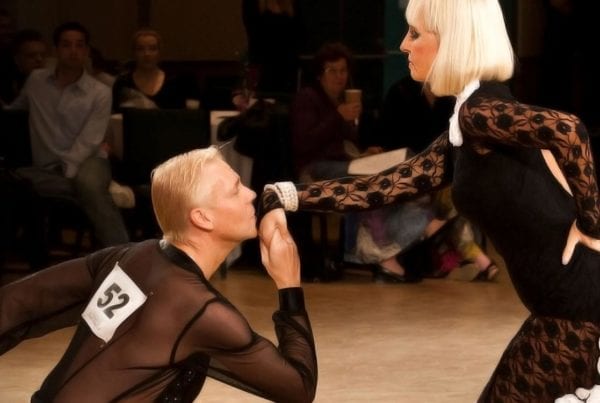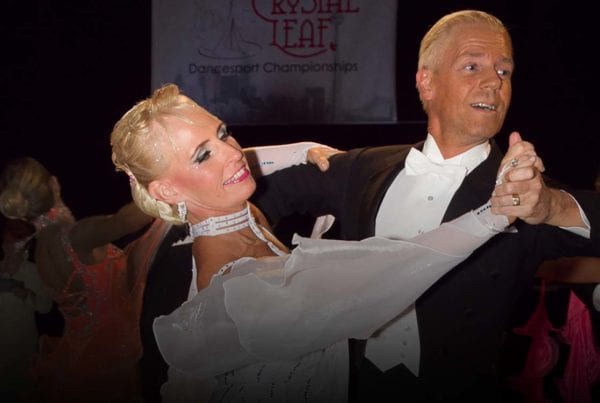All ballroom dancers are aware that the Slow Foxtrot is the most difficult dance to master in the Ballroom genre. It requires great control of body flight and leg action. Although there is rise and fall, the emphasis is on using the energy horizontally rather than sending it vertically as you do in the Waltz. One of the things dancers struggle with most is the unusual timing in Slow Foxtrot. It’s significantly different from the other dances.
In the other dances, each step pattern generally starts with the feet together (or at least the body is firmly over one foot), and ends again with the body solidly over one or the other foot. For example, in a Waltz Natural Turn the step begins with body weight over one foot. As the foot swings through the action the body moves between the feet but ends up over the other foot at the end of the figure.
In Slow Foxtrot this kind of body weight action is thrown out the window. In most figures the body is not over one of the standing feet at the start and end of the figure, but is actually positioned between feet. The figure ends the same way, with the body positioned in between the front and back feet, ready to move into the next figure.
This characteristic is why the Slow Foxtrot glides so beautifully along the floor, and also one of the main reasons it is hard to master.
But in addition to the body flight issue is that of musicality in Slow Foxtrot. A great many dancers don't understand the way they need to use the musical timing to move through the leg action. The following information might help.

Members-Only Content
This content is available to Delta Dance members only. Membership grants you access to special content, our members-only videos, and downloadable choreography and technical guides. You may cancel at any time.
Click here to register or login below with your membership credentials.













